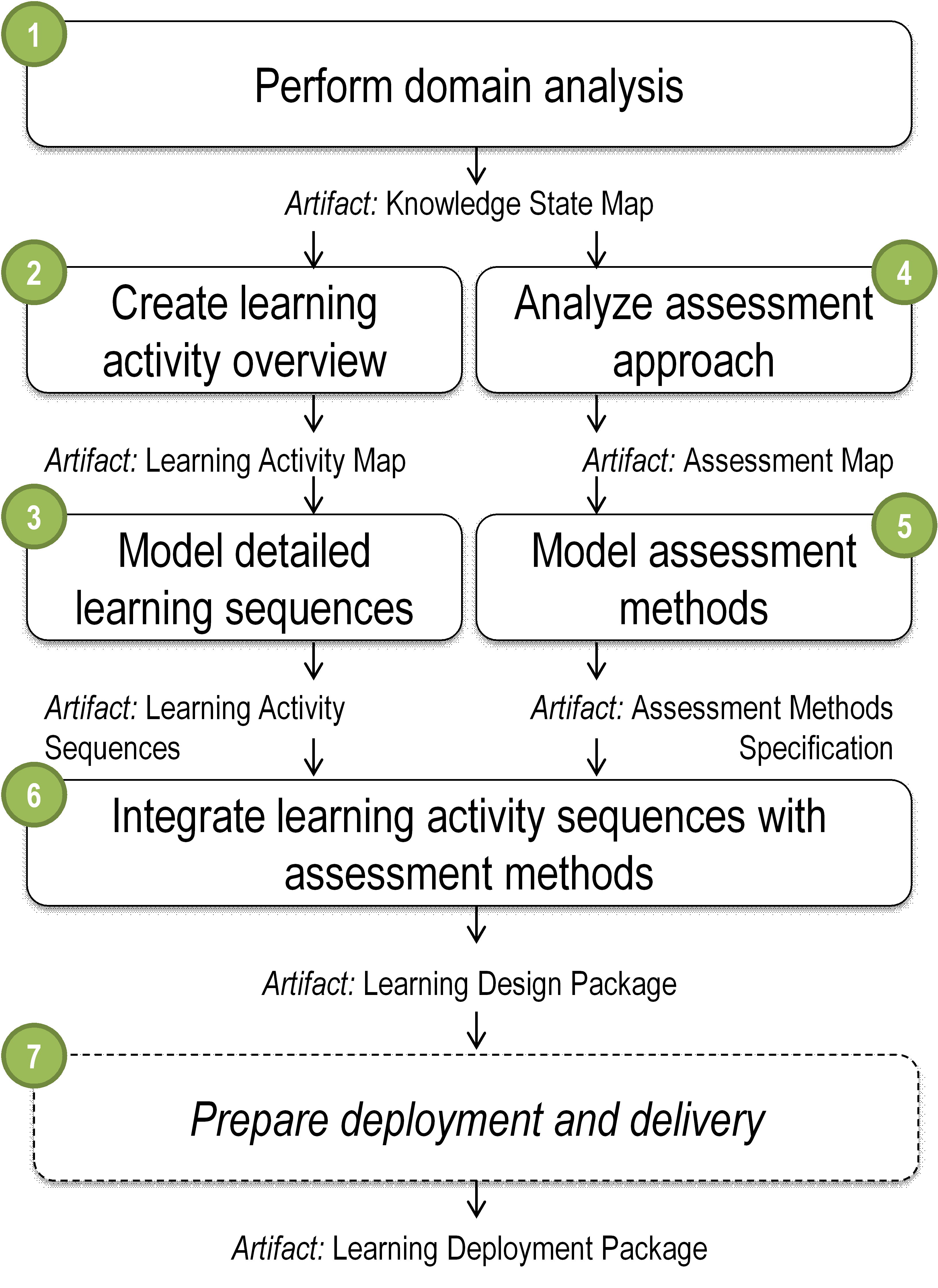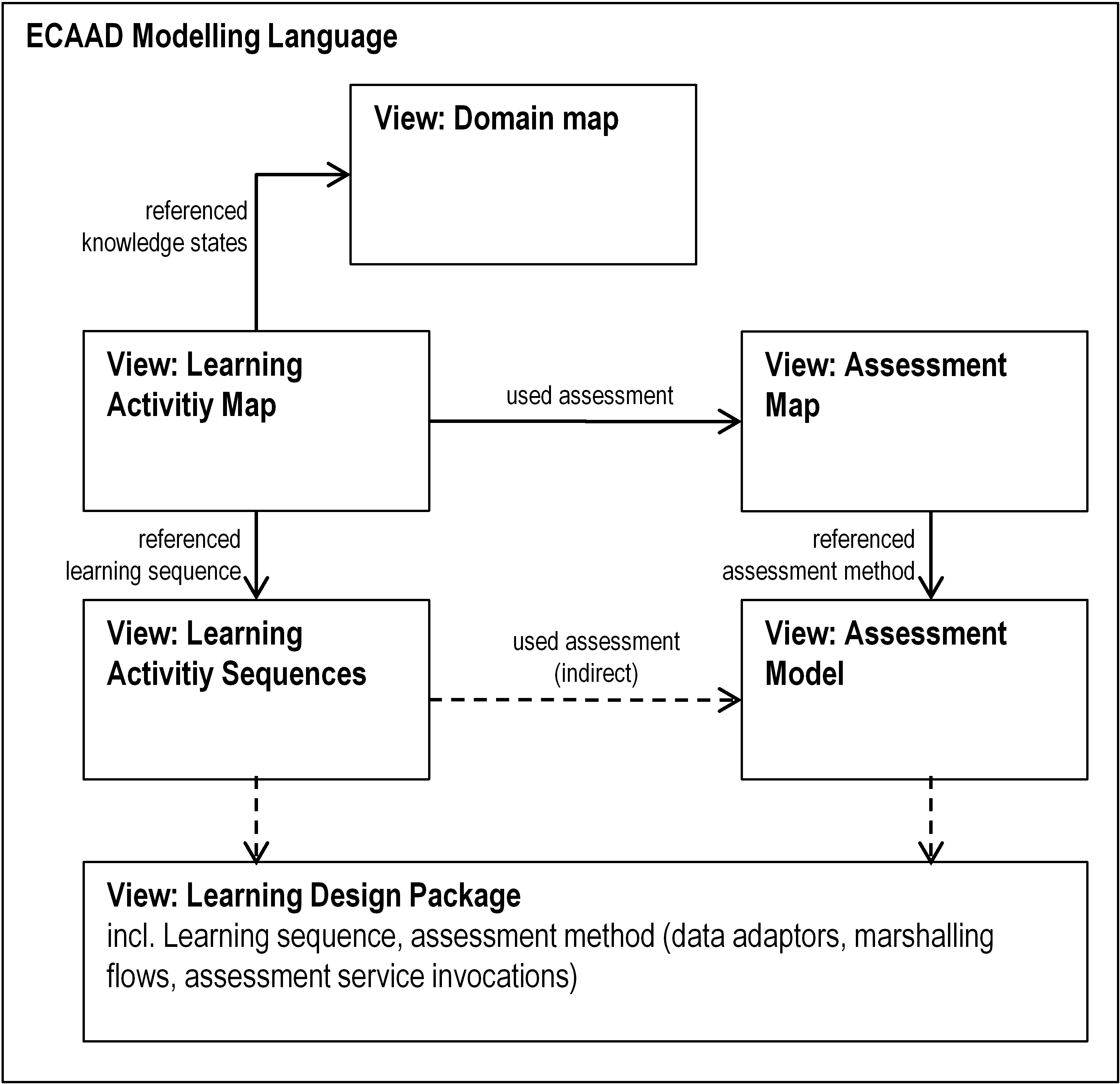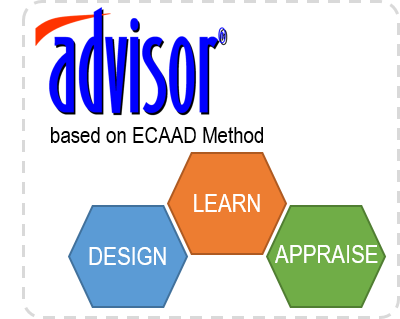Details
The conceptualization of the ECAAD modelling method is based upon its modelling procedure – the way a user of the method applies it, runs through design phases, performs planning tasks and produces result artifacts as a basis for human interpretation/knowledge sharing and machine interpretation, using the artifacts as configuration items for arbitrary learning management systems (LMS). The method implementation resulted in the ADVISOR Toolkit, providing IT-support for certain aspects of the modelling procedure.
Modelling Procedure
The modelling procedure is defined in 7 steps as a top-down approach including iterative updates and reflections. These 7 steps are detailled in the figure below, starting with a review and analysis of the learning domain and resulting in deployment/delivery support of the activity and assessment design to the LMS.

Modelling Language
The modelling language defines the necessary model structure and their interrelations as artifacts resulting from the different steps of the modelling procedure defined above. For the conceptualization we introduce the term “view” as a composition of concepts, targeting a specific domain of work and/or expertise. This view concept enables the separation of concerns for a role-based interaction concept in the tool as modeltypes

ECAAD Modelling Language: Abstract Model Stack
Mechanisms and Algorithms
Mechanisms and Algorithms in the tool are running on the model structure/language above to support the modelling procedure. Mechansisms are included to a) support the designer (effectiveness of design assessment, layouting and reflection), b) to validate the design and run verification and c) to support deployment and delivery by triggering LMS APIs or generating packages.


